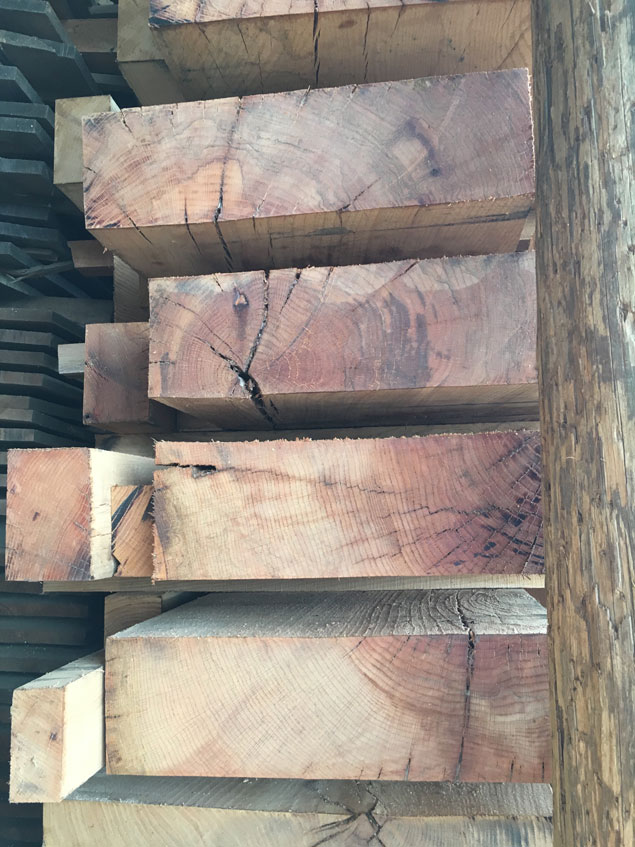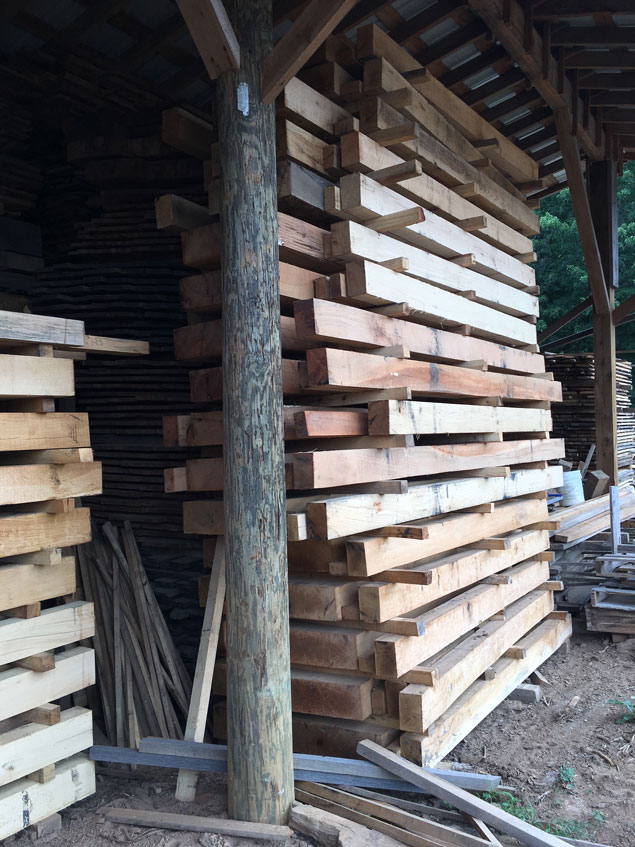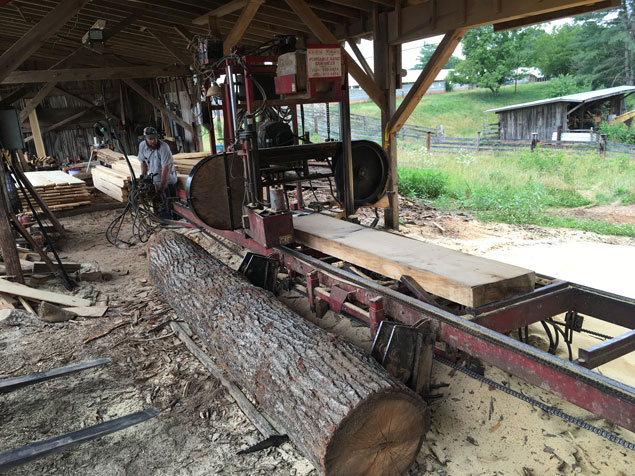We may receive a commission when you use our affiliate links. However, this does not impact our recommendations.
During the last seven years, I’ve slowly become a fan of using a monolithic slab for the top of a workbench. And I’ve also slowly begun to ignore all the criticisms of slab tops.
I built my first slab-top workbench in 2009-2010, which was published in the August 2010 issue of Popular Woodworking Magazine. The top was some wet cherry that had been rotting in the log yard of Ron Herman for several years.
Despite the fact that the top was punky and extremely wet, it has become a workbench that doesn’t move much seasonally and is remarkably solid. (Yes, Roy Underhill broke off a section of the top during a Woodworking in America, but it bolted right back on.)
I’ve also helped build a couple dozen slab workbenches with the French Oak Roubo Project, which uses oak that has been drying for more than a decade but is still very wet (up to 60 percent moisture content).
My experience with these benchtops goes like this: Because they are wet, they are fairly easy to plane and mortise, though they weigh a lot because of the extra moisture. After assembling the bench and working on it, they tend to dry out slowly. The first year with the bench requires some maintenance – you might flatten the top two or more times.
During the second year the benchtop moves less. You might flatten the top once or twice. The third year might need only one flattening. Then the top gradually settles to the point where it doesn’t move much, if at all.
I am to the point where I am ready to use slabs that have been cut during the last 12 months. To test my theory I have a red oak top that was cut during the winter that I will use to make a full-on French workbench. The top is extremely wet. The legs and stretchers will be dry.
Why do this? You can save a lot of money and time by purchasing fresh-cut slabs. I bought all the wood for my next Roubo bench for $500 from Lesley Caudle, a sawyer in Booneville, N.C. You can read more about Lesley’s operation here and order bench kits via email at: lesley27011@yahoo.com. Now if you don’t believe this is possible, that’s OK. You’ll just have to be patient and read about the process when I start building this bench in January or February.
But for those of you who are more daring, drop Lesley a line and build along with us. Instead of waiting a decade for a bench (or spending a fortune) you can have a bench this winter.
— Christopher Schwarz
 Editor’s note: Want more from Chris on building a workbench, workholding techniques and more? Read “Workbenches: From Design & Theory to Construction & Use“
Editor’s note: Want more from Chris on building a workbench, workholding techniques and more? Read “Workbenches: From Design & Theory to Construction & Use“
Here are some supplies and tools we find essential in our everyday work around the shop. We may receive a commission from sales referred by our links; however, we have carefully selected these products for their usefulness and quality.












What about the weight of the top? A wet, 8′ bench top would be brutal to turn over, wouldn’t it? I’ve built a smaller version (5′ long, 3″ thick”) with dry oak, and that was reasonably heavy. Any suggestions?
Chris: How wide would you have sawyer cut the slab to? With a final dimension of 24″, I don’t know how much to allow for flattening the rough edges. I’ve never surfaced anything near this size.
Are you planning to blog about the slab bench project as you go, or wait until the DVD is edited? I’d like to build along, preferably.
I’m new to wood working and am really excited to build my first workbench – a Schwarz inspired Roubo. Picked up some 4×6 ash beams that were milled last spring. Starting to clean and square them up but I won’t be laminating them until the spring. Until then they’ll rest in my garage for a long, cold, Canadian winter. Is there an ideal spacing between stacked beams? For now I’m using scrap 1/2″ plywood spacers.
Crikey I haven’t got any logs laying around and no way to slab one if I did. I’ll have to live vicariously through your projects and just wish I had the opportunity.
What size slabs are ideal? I have my own band saw mill with lots of cherry, red oak, maple, ash, walnut, butternut logs available here in upstate NY.
Crap. Booneville isn’t nearly far enough away from me to keep me from wanting to do this.
I milled up some huge white oaks this summer. One of the top 10′ log of a 30′ bole was getting a bit limb-y for furniture grade lumber. So I sawed up some Roubo-sized slabs. Maybe I’ll join in this winter. I was planning on going for it this spring anyway. Who has a decade to wait around!?
Color me intrigued! A new bench may be in my future after all!
My wet white pine roubo was drenched when built, but with an endless supply of white pine trees behind my house and a chainsaw mill and no $ it was a no brainer.
I did the same thing a few years ago trying to build myself my first workbench without breaking the bank: I went to my local lumber yard and selected out the clearest 6×12 douglas fir beams i could find and 4×4’s for the legs.
I really admire the benches that i’ve seen built, but in my own case (a finish carpenter here in the bay area), I couldn’t justify building something similar to the masterpieces that i continually admire. Also I wanted to not worry about it when others (or myself) use my bench.
it was wet when i first brought it home and it probably still is, but it really has become the best tool in my shop. Probably the best thing about it is the emmert vice on one end.
When using it, the best part is not having to worry about it: kids attacking it with a sharpie? not a problem. using my bench as a station to work on nail guns? no worries.
Not sure that I would ever go to a expensive top now that Ive gone the cheap route.
Thanks for writing this. Your posts of late have seemed headed this direction. I have an enormous ash log in my driveway that I would like to turn into a bench. Looking forward to tracking with the build.
I have a couple of local sawmills, may be time for some negotiating.
Thick wet workbench tops. Maybe time to verify your life insurance coverage!